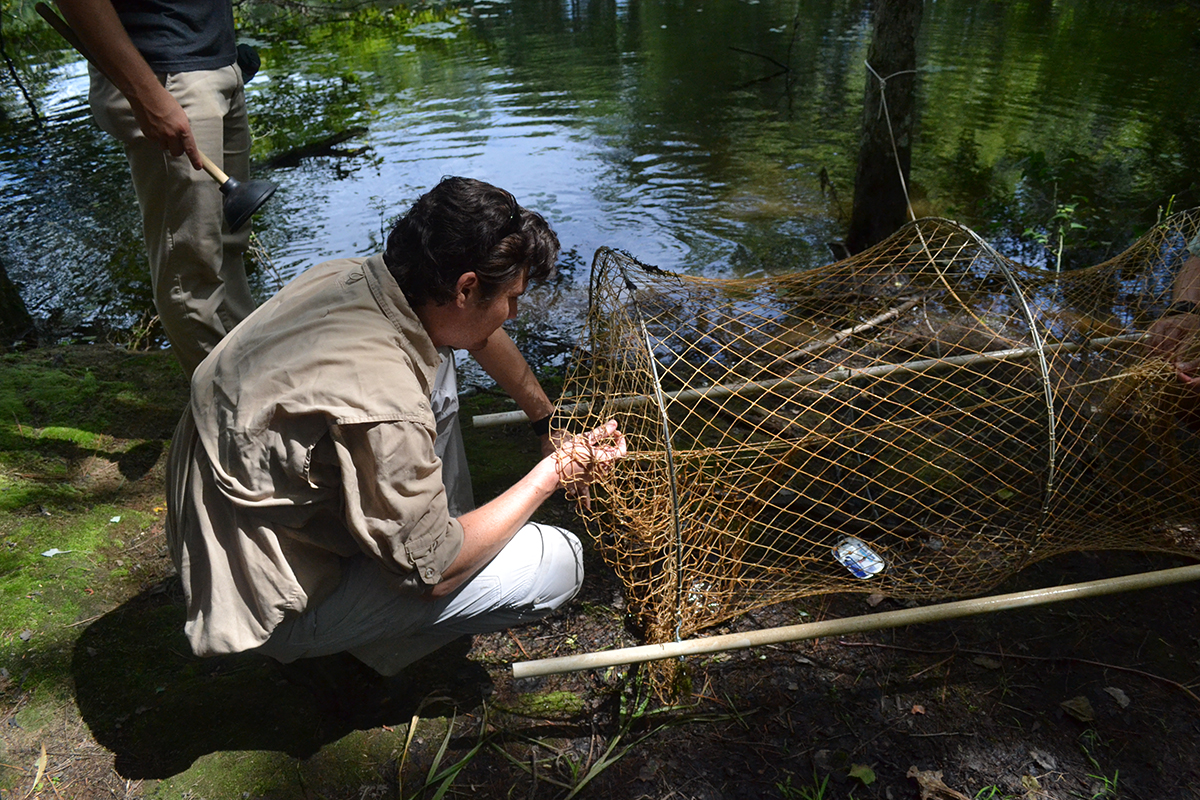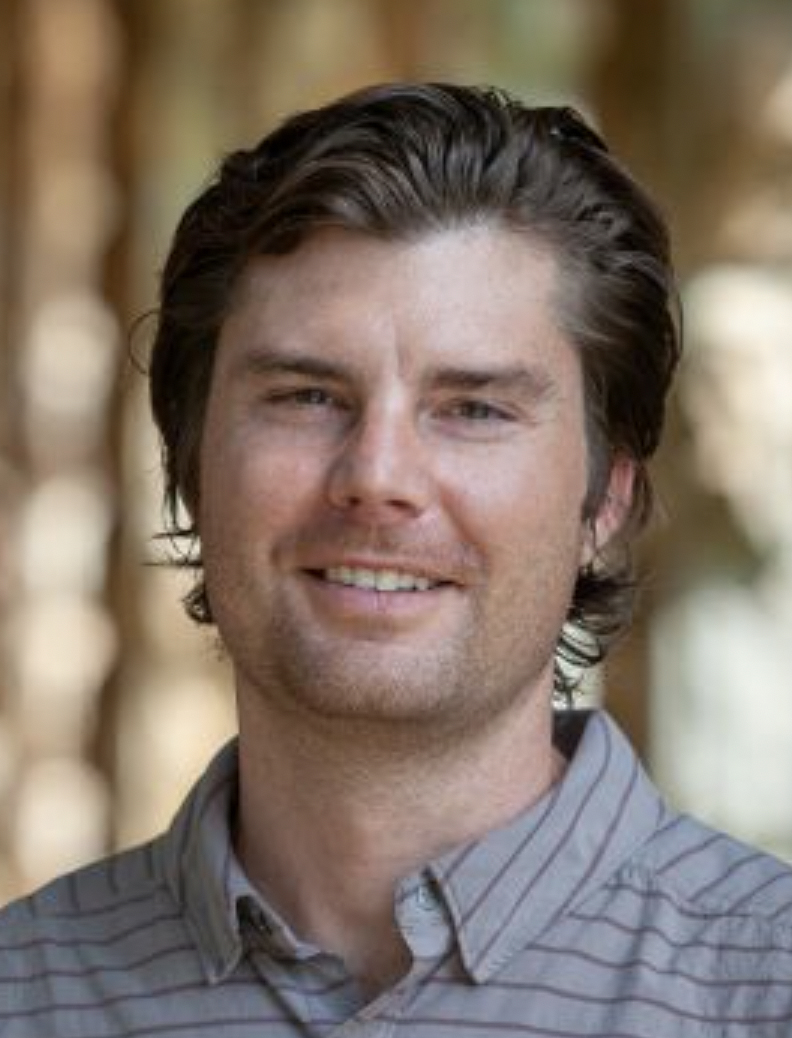
Kevin Fouts unties a turtle trap to show a common snapping turtle to a group of high school students in July 2018. (Vanessa Moss/Sewanee)

Kevin Fouts unties a turtle trap to show a common snapping turtle to a group of high school students in July 2018. (Vanessa Moss/Sewanee)
With a mom from South Carolina and a Georgian dad, Kevin Fouts knew from a young age he would eventually attend University of Georgia, where his parents met. After receiving his M.S. in Wildlife Management and Ecology from UGA, he stuck to the southeast and worked in the Smokies to connect water management practices to their impacts; from wildlife diseases, salamander populations, to biofuel production. This is his first year in Tennessee, working at The University of the South as the coordinator for the Sewanee Headwaters Initiative.
We interviewed him to learn more about the initiative and the impacts the work can have on the environment and policies surrounding it.

Q: How was the concept of the Headwaters Initiative formed?
A: I think one of the impetuses was trying to think of ways the domain is a unique asset to the University. It’s really important for them to try to establish and grow their imprint in their environmental programs among liberal arts universities. From a research perspective, the Domain offers a lot of really unique opportunities because we own it and it’s so unimpacted by upstream effects; and because it all goes downstream it offers stewardship opportunities as well.
Q: So, how are you monitoring these water systems? Are you looking at their health? What are the impacts you’re protecting them from?
A: What we’re doing right now is laying the groundwork for more nuanced research in the future. No one has really in the past done a thorough characterization of the streams’ baseline data. We have censors in streams to log light, temperature, and tell us when the streams dry out. We have leaf litter bags to see how the environment is breaking down leaf litter and cycling carbon. What we were doing yesterday was bottling samples to get a snapshot of the stream water chemistry. It’s necessary if anyone wants to do anything more nuanced, like studying the effects of global warming: You have to know your baseline.
Q: The southeast is, within North America, this big hotspot for freshwater biodiversity. Why is it critical that Sewanee look at its biodiversity and freshwater ecosystems?
A: Well, because that makes it culturally important. It’s the salamander capital of the world right there in southern Appalachia. But it’s also because animals all play their own role in their ecosystem here. If we decrease diversity there’s a good chance you can wreak havoc on some of these ecosystem services that we rely on animals for.
Q: Such as?
A: Things like nutrient cycling, soil health, forest regeneration, trophic levels. If anyone around here is interested in hunting, those animals have to have something to feed on. Like I said, soil health and forest regeneration: Some of the little critters that hang out on the floor play a big role in seed dispersal and leaf litter breakdown that becomes fertilizer for the plant that grows that allows the deer to eat. The health of all of these systems, none of them are independent. It’s easier to compartmentalize them to study them, but they’re all interconnected.
Q: A minute ago you called the southern Appalachians the “salamander capital of the world”—
A Yeah, they like to put that on coffee mugs in the Smokies.
Q Ha! Well, can you explain what Bsal is and why Sewanee is concerned about it?
A: Yeah. Bsal is essentially a form of Chitrid, and a lot of people who are at least somewhat acquainted with amphibians know of Chitrid came through and killed a lot of frog species, particularly in south America.
Q: So, is this a viral disease?
A: No, it’s a fungal pathogen. All amphibians can breathe through their skin, and though some also have lungs, they all assimilate moisture and other things through their skin. Because their skin stays wet the fungus will colonize it and cause them a lot of physiological stress.
More recently, I think it was 2014, they actually documented Bsal in western Europe that had been brought over from Asia. A lot of animals coevolved with pathogens in their environment, but if you pick up a pathogen and move it somewhere—like in this case from Asia to Europe—it can completely wipe out whole populations.
Because we have so many species here and the international pet trade is so thriving in Atlanta, there’s big time concern among most scientists that its’s really a “when” not “if” situation for Bsal to get introduced to the southern Appalachians. It can cause all kinds of problems for the ecosystem services I talked about before… Most people are preparing already for that. It would be sad for people like me, who are just big salamander fans, but it would be terrible for the ecosystem.
Q: Because the introduction of Bsal is a “when” not “if” situation, how do you expect SHI to contribute to monitoring Bsal and preparing for its arrival?
A: Well, we do the stream surveys. If certain species are found to be more vulnerable than others, we will know where they are and will recognize the areas that we’ll have to focus in on.